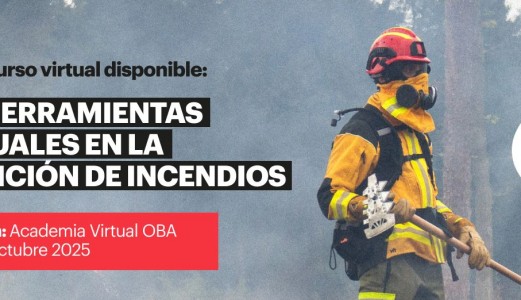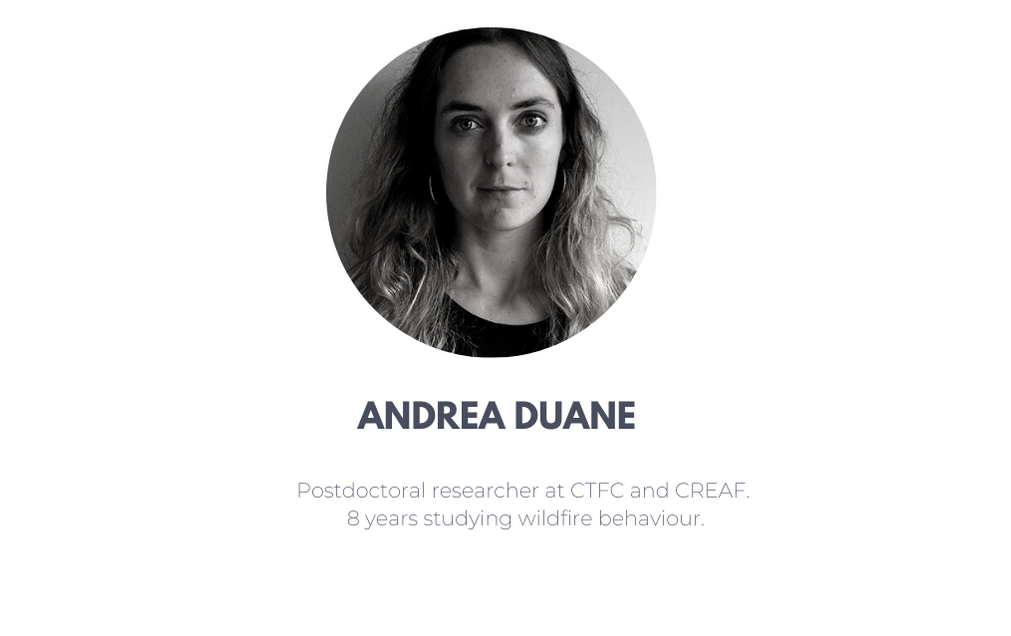
vft: In an interview in the newspaper La Vanguardia you were quoted as "the environmentalologist who puts out forest fires with math." How does it work your method of calculating the probabilities of wildfires occuring?
A.D.: We have built a simulator that tries to reproduce the fire regime (number of fires, size, intensity ...), in this specific case, in Catalonia, and also the opportunities for firefighters to extinguish. Once we understand what are the relationships between vegetation, meteorology, etc. and fires, we input this data into the simulation model. We give it a real landscape, the current meteorology and we make it run towards the future and we are looking at how, as we change some of the factors, the probability of fire is altered. These factors can be climatic or landscape (if we change, for example, some type of tree species in the forest, for another more shrub or scrub). Then we introduce the parameters that would correspond to the extinction forces. If they are greater than the advance of the fire, it is possible to extinguish, if they are less, it continues.
vft: Are the parameters entered based on the historical wildfire background?
A.D.: Yes, we have a reliable 40-year-old registry, with all the wildfires that have occurred in Catalonia.
vft: How is this information revealed to the Fire Services?
A.D.: The model provides us with useful information in the medium long term. Its purpose is not to alert the extinguishing systems, imminently, when an emergency is detected, in fact, it does not have that predictive capacity. It is an instrument to quantify the effectiveness of different management strategies. As of today, we are already using it in a pilot project as a real planning tool, ten years from now. In this specific project, we analyze how it affects carrying out prescribed burns in certain areas and with a certain frequency, on the percentage of probability of fires.
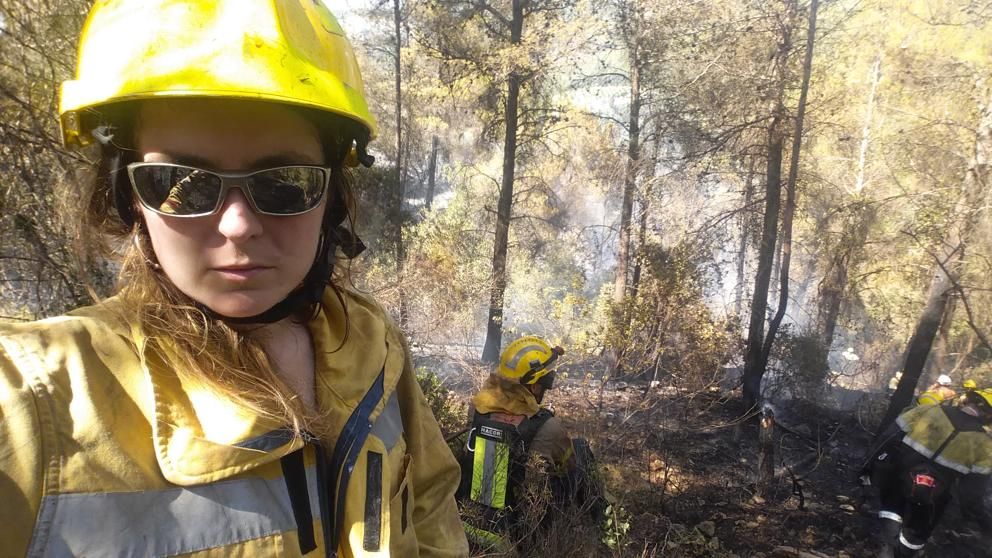
vft: This can have a very positive impact on landscape management policies.
A.D.: Giving numbers to things that we all know, (we all know that reducing the vegetation fuel decreases the risk of wildfires, but now we get to know by what percentage and for how long); it is a very useful tool for strategic planning.
vft: In which parameters did you improve the mathematical model Medfire by Lluís Brotons?
A.D.: The Medfire we are working with now is a bit more complete. The base was the same but did not include the types of fires. The wind parameter was considered, but it did not simulate convective fires, topographic fires, etc. Now there is more climatic detail, especially in terms of the simulation of synoptic conditions that I have commented before. The effect of prescribed burning on fire probability is also included in more detail.
vft: What is the contribution of the Forest Technology Center of Catalonia?
A.D.: It is a research center that has a very applied aspect and is very close to decision-making. It is not just an academic entity. We work closely with management professionals, analysts, and fire prevention and suppression systems.
vft: What data is entered into the system?
A.D.: We use the maps that we have of land use and covers of Catalonia; forest inventories, to know the structure of the vegetation; the fire history; and meteorological data, above all, drought indices that occur in spring and summer in Catalonia. It also collects data on synoptic conditions: frequency of wind episodes, heat waves, barometric swamp, etc.
vft: And what parameters are extracted for the analysis?
A.D.: The likelihood of large and high-intensity fires. Also if the low intensity ones are more on the perimeter or occur in more wooded areas. In the end, what we are seeing is that there will always be fires and what is interesting is to see if we are able to reduce the highest intensity ones, which are the "bad" fires.
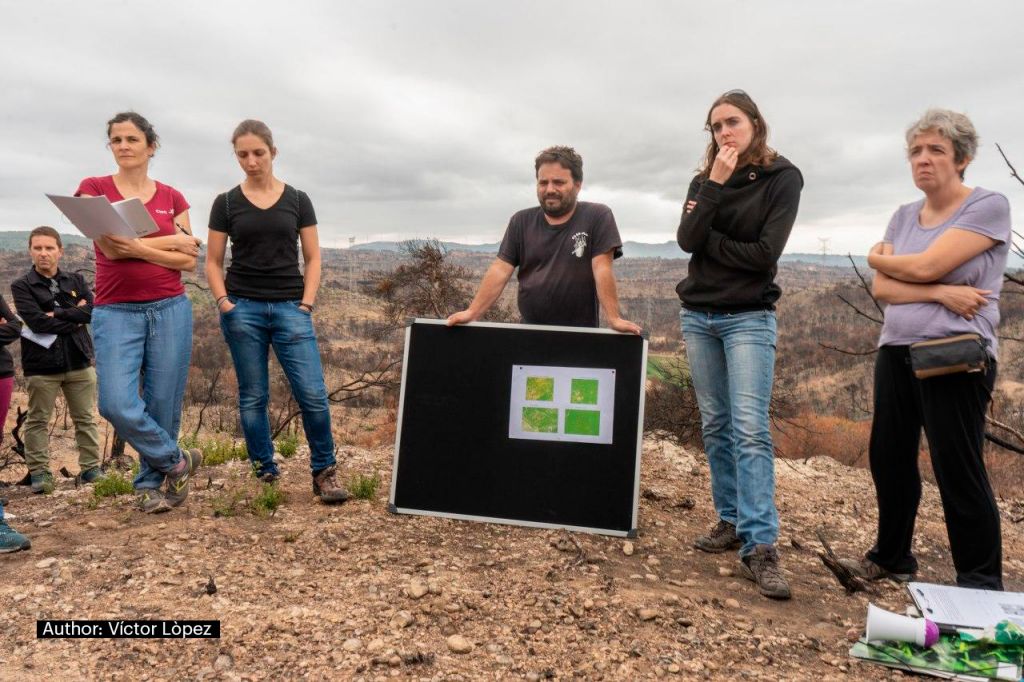
vft: Is it possible to predict the intensity or the generation of fires that we may have, even if we do not know exactly when they will occur?
A.D.: In the model we have introduced the ability to have certain types of fire, which allows us to know if the landscape will be capable of generating a high intensity, convective fifth or sixth generation fire. Right now there is a randomness factor (in the end it is like ignitions, we do not know when they will occur). What we do see is that, if the landscape is managed, for example, if it burned the previous year, a high intensity fire will not be able to occur, but if the ignition occurs in a wooded area of the Pyrenees, with high fuel loads, in a dry year and the model simulates that there is a random heat wave, yes that fire will occur.
vft: Anticipation is key for Fire and Rescue Services.
A.D.: What is being seen from the world of research is that one of the great keys to understanding fires, especially those of high intensity, is the humidity of the fuel. Until a few years ago, the focus had been much on dead vegetation, litter and branches on the ground, because it is the most fireproof material and when the fire starts it usually originates from this material, but in the end what you are seeing is that What causes the fire to advance and exceed the extinguishing capacity, which is the critical point, is the humidity of the living fuel, which would be above all that of the leaves and fine branches. Understanding the moisture of live fuel is much more complex than that of dead fuel. The humidity of the dead fuel depends a lot on the meteorology of that same day or the previous one, because it absorbs the environmental humidity. The humidity of the live fuel depends on the precipitation of the previous spring, the depth of the soil, the type of species, whether it has been suffering from any insect infestation, etc. They are much more complex and difficult factors to model and predict, but in Catalonia we have a prevention service that, together with Agents Rurals, is monitoring the humidity of some key plants, such as rosemary, throughout the territory to detect alarm signals and mobilize prevention devices when appropriate. Vegetation is an important factor about which we are learning new things, as is meteorology. You have heard of the known 30, 30, 30 theory.
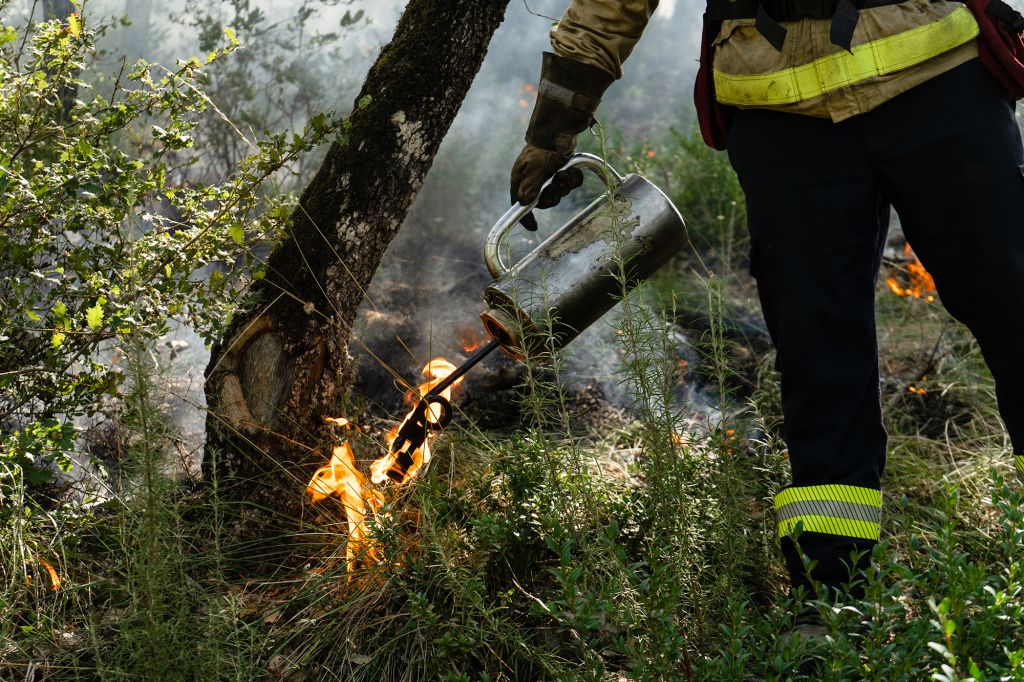
vft: If the humidity conditions are below 30 percent, the temperature is above 30 degrees and the wind exceeds 30 kilometers per hour, we have a very favorable condition to have high intensity fires.
A.D.: Exactly. It is useful, but this rule does not always work, it depends a lot on the area. What is being seen is that it is important to contextualize the factors, rather than establish general rules. In the end, an episode of moderate wind in the center of Catalonia is very different than in the Empordà. If we have episodes with wind blows of 60-70km per hour on the Empordanese coast, the extinction systems and the landscape are much more prepared than they are in the central highlands. These alarm signals or this anticipation have to be adjusted to each zone.
vft: What do we know from our fire history?
A.D.: During the 80s and 90s a very clear pattern was reproduced in which it was seen that an increase in temperature (which was already being registered, although in a milder way than what we are registering now), and an increase in the forest mass in Catalonia, meant an increase in fires. And that happened throughout the 80s and 90s, with some exaggerated years such as 86 and 94. But when we reached the 2000s it is evident that the entry of fire analysts, and specifically the GRAF, improves the extinction capacity is very much and that changes the way Catalonia burns. And this mixed with the fact that much of Catalonia had already burned during the previous decades, means that there are actually fewer fires. It is no longer what we had in the 90s. But hey, what we also see is that the big fires that occur are the ones that the firefighters cannot really control and they are very fast and very intense fires, surely unprecedented years ago. This is very decisive in the fire regime: the speed at which this surface burns.
vft: What is the fire regime in Catalonia?
A.D.: In the Mediterranean arc we usually have many small fires and a few of high intensity, which burn large areas and affect all levels of the forest, causing all the vegetation to be eliminated. In other areas of the world, where for example they have savanna, fires burn only the herbaceous layer, and with much more recurrence.
vft: Let's talk about the different levels of the forest.
A.D.: Visiting burned areas gives us a lot of information about the response of the vegetation. As an ecologist I find it a very interesting exercise to understand how fires interact with the evolution and dynamics of the landscape. The species, the vegetation, is not that it is adapted to fire but it is adapted to a fire regime. For example, the Pinus halepensis, which is our pyrophytic species par excellence, when it has already developed serotine pineapples (those that store seeds for long periods of time) are already interested in a fire to re-create open spaces where it returns to succeed this same species. And on the other hand, if many years pass and it does not burn, it is very uncompetitive when there is shade, and it can disappear. He likes high intensity fires, so another strategy he has is to store dead branches at the base so that the fire can climb and reach the top. On the other hand, there are other species that rather than regenerate or resurface with fire, what they do is survive. We see it in some species that have a very large bark, for example, to resist the passage of fire. These species are adapted to surface fires, which burn the understory but not the canopy. There is no single good type of fire, but there are a number of fires to which different species are adapted. Another key factor is when these fires occur. If they are produced outside the corresponding season, when they are in the process of flowering, for example, the effects can be much more severe on the survival of this plant. Anthropic effects modify these patterns and put the survival of many species at risk.
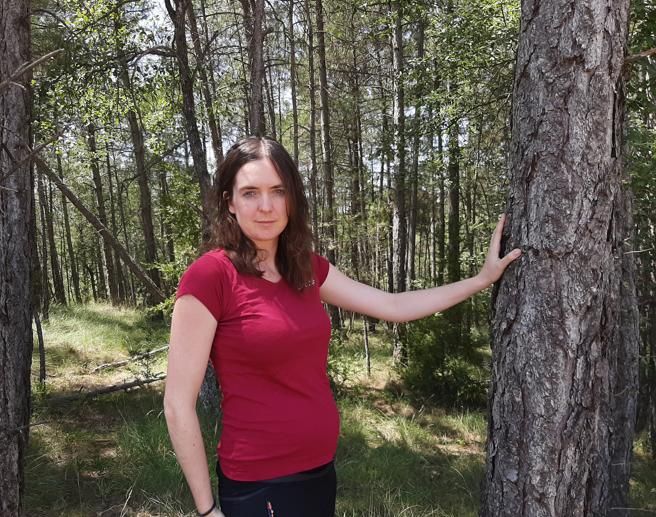
vft: Are our forests adapted to the fires we are having?
A.D.: To many yes, to the most intense no. There may be a point of no return. The easiest example: this species that survives surface fires, in the event of a canopy fire, its leaves would burn and it would no longer be able to photosynthesize and would die. It is still not clear whether the very high intensity fires would eliminate the seeds of species such as Pinus halepensis that are released after the passage of these disturbances. At the same time, if the fires are very recurrent, it is possible that this species has not had time to develop the cones that contain its seed and cannot sprout again, losing this regeneration capacity after the fire.
On the other hand, there are certain species that colonize from the perimeter inwards. That is, once a wooded area has burned, the surviving vegetation in the surroundings is able to colonize. But if you look at cases like Australia last year, which burned millions and millions of hectares, it can be very difficult for certain species to get to the center of the fire to repopulate the forest mass in a sustainable period of time.
vft: What capacity do sixth generation fires have to reproduce repeatedly in the same area or country?
A.D.: It all depends on how vegetation is regenerated. It is true that for a few years, we will have a window of opportunity because the burned areas are managed territory that will no longer burn at such high intensities. But if over time we return to have a wooded mass with a lot of fuel, the situation can be repeated. It is also possible that we see a change and the same forests do not reappear. What many researchers tell us from studying long-term models is that perhaps we should forget about seeing certain tree species in certain places and that these end up being replaced by more shrubby or scrub species that do not have the capacity to generate fires of this intensity. . That is yet to be seen. What happened last year in Australia is that the intensity was so brutal that areas that had already burned two years ago were burned again at high intensity. This is of great concern because there are plant species, such as eucalyptus, that are resilient, but if they are burned repeatedly they lose their ability to sprout.
vft: After analyzing the fires in Catalonia, you expanded your field of research to Portugal, Greece, the United States and Australia. Are there points in common between the Mediterranean arc, the US and Australia?
A.D.: Yes. The most direct and consensual is climate change, that is de facto. We see high intensity fires everywhere due to stress on vegetation due to increased temperatures and in some places to a decrease in rainfall. Not so much in Spain, because the rainfall trend is not very clear, but for example, in Chile, they do have an almost structural drought, a decade of high temperatures and a decrease in rainfall. There are also points in common between the United States and the Mediterranean arc, mainly an increase in the forest mass that homogenizes the landscape and encourages these large high-intensity fires. There it is attributed to the changes in the extinction strategies of the last decades; Until the 19th century there were very widespread burning practices prescribed for different uses, the total suppression policy of the 20th century that eliminated the use of fire, caused this increase in unmanaged vegetable fuel. Here, however, it is attributed to widespread rural neglect (the cessation of activities such as agriculture, forestry or grazing animals).
vft: We know that Native Americans or aboriginal tribes in Oceania used fire to manage the landscape. What is our historical relationship with fire (in the Mediterranean arc)?
A.D.: The most traditional populations that we find in our territory have always made use of fire. It is now that they are told that they cannot do it. In fact, the etymology of the word Pyrenees comes from Piri (fire) and neus (snow). The place where the two ingredients are mixed.
vft: How does fire interact with habitat loss and fragmentation?
A.D.: It is an interesting question. On the one hand, we are very clear that a fragmentation of the forest masses here helps us to control fires, because there is more heterogeneity, because there are more opportunities for extinction, and so on. The same does not happen in other parts of the world. For example, we know that in the Amazon or Siberia, an increase in fragmentation causes an increase in fires. On the other hand, the fragmentation of forest masses affects fire, but we know that fire also has an impact on the structure of the landscape. It is what we call pyro diversity. It is the principle by which having different fires, which occurred in different years, throughout a landscape, can give different habitats for different species of animals and plants, favoring biodiversity.
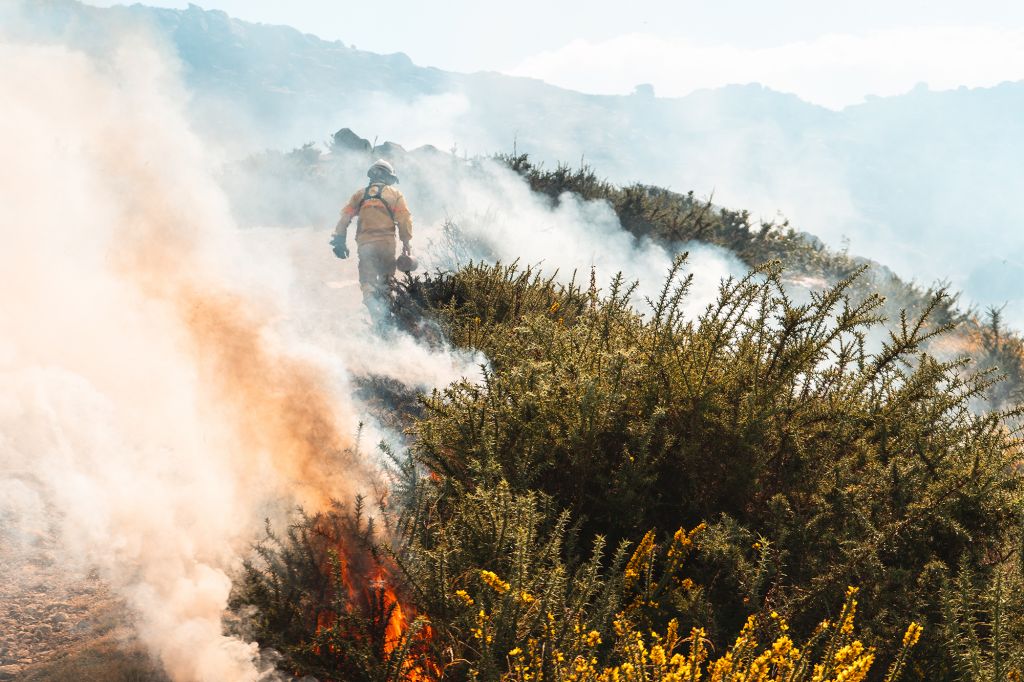
vft: Are the mediterranian forests healthy? And if they are not, is it a reversible situation?
A.D.: We have a climate imbalance. Many species are suffering a structural drought that, combined with occasional heat waves, is causing some mortality. This can lead to the replacement of the species that we have today by others. In addition, in the Mediterranean arc few forests have not had the influence of man, and this fact causes that their dynamics are not those of a natural balance. We have very dense stagnant stands, which can be a tinderbox for fires and prevent the regeneration of some species.
vft: We have heard analists and technical firefighters alert several times, forecasting that the sixth generation of wildfires will reach the peninsula. They say they don't know when this will occur but they are certain that it will happen sooner or later. Does the scientific community confirm this prognosis?
A.D.: Yes, we know for sure that great wildfires are coming. We cannot say when exactly, but if we speak in terms of human generations (meaning a period of 30 years), we can affirm that this generation will see them for sure. Reaching 50°C in summer on the peninsula will be something that we will see regularly in the coming years. And this temperature rise will have consequences on wildfires and severe effects on the vegetation. We cannot give an exact date, because there are many random factors to consider, but they are coming for sure.
vft: Where are these big fires going to happen?
A.D.: In all the areas that historically have had a high rainfall history and therefore the vegetation is highly developed, and that now begin to be more influenced by droughts and heat waves, such as the Pyrenees, the Cantabrian province or the framework Atlantic. The north of the peninsula is the one most likely to develop these fires because its vegetation has this capacity to generate high intensity.

vft: Why do we put out fires?
A.D.: We put out fires because they pose a threat to humans, life, our goods or the forests if we want to get an economic return from them, (because Siberia burns every year and only goes out when the fire approaches to urban forest phase). But we are not aware that with this policy of turning everything off, we can go against the objective of protecting these assets because we do not allow large fires to be avoided. The famous paradox of extinction. We create highly flammable scenarios because we do not allow small fires to develop. Fires will never be prevented.
vft: What is the ultimate purpose of Mediafire?
A.D.: Being able to quantify our management measures on the probability of fires to answer questions about investment in resources. Should we invest more in agricultural policies? In prescribed burns? In extinction? In bioeconomy? All this we can ask the model and obtain conclusive results.





